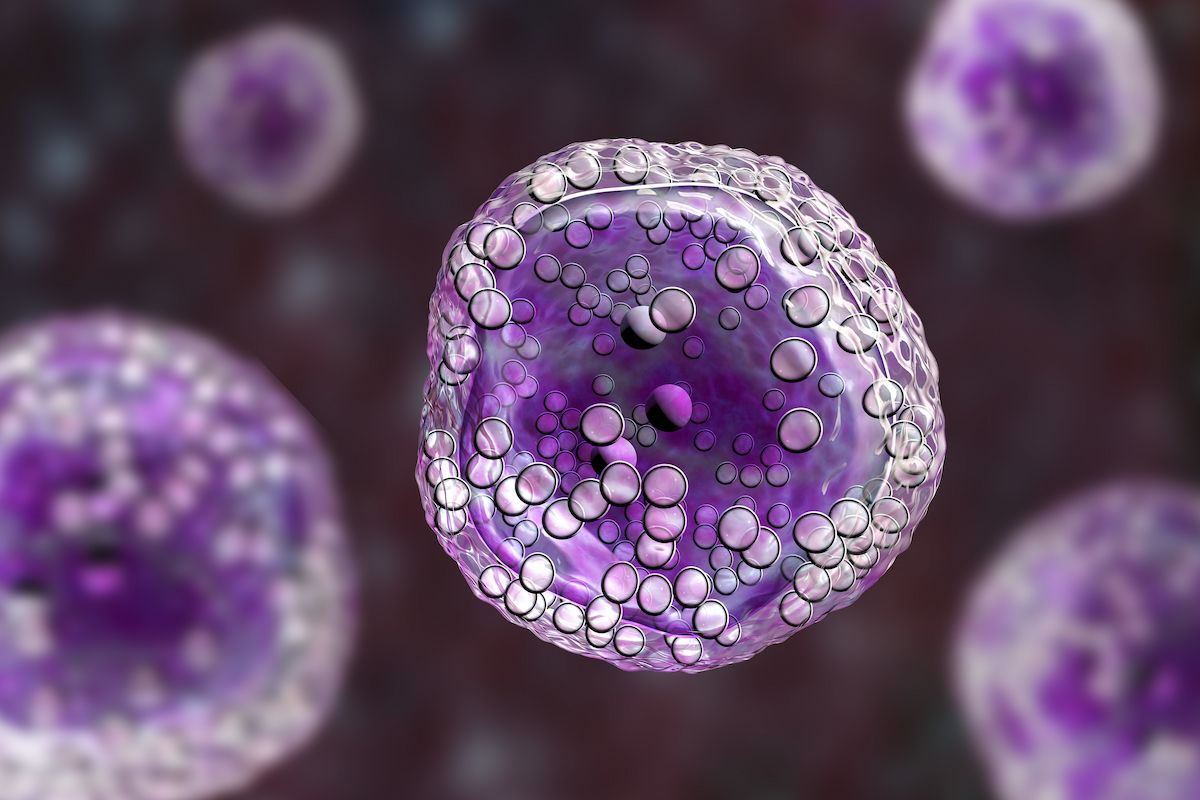New Prognostic Scoring Model May Inform Treatment Strategy for MDS
The Molecular International Prognostic Scoring System appears to improve prognostic discrimination across all clinical end points compared with other scores in patients with myelodysplastic syndromes.
"In this study, we provided an extensive validation of the recently developed IPSS-M and we confirmed that the molecular score performed better than the conventional IPSS-R," according to the study authors.

The Molecular International Prognostic Scoring System (IPSS-M) improved myelodysplastic syndrome (MDS) prognostication compared with the currently available Revised International Prognostic Scoring System (IPSS-R), and could potentially inform treatment strategy selection including hematopoietic stem cell transplantation (HSCT), according to findings from a study (NCT04889729) published in The Journal of Clinical Oncology.
In terms of prognostic discrimination, concordance was 0.81 (95% CI, 0.79-0.82) with IPSS-M vs 0.74 (95% CI, 0.73-0.76) with IPSS-R for overall survival (OS). Additionally, concordance with each respective scoring system was 0.89 (95% CI, 0.87-0.91) vs 0.76 (95% CI, 0.73-0.79) for leukemia-free survival (LFS).
A five-to-five comparison of IPSS-R and IPSS-M patients’ distribution resulted in restratification of 46% of patients, 23.6% of whom were upstaged and 22.4% were downstaged. Among restratified patients, 26% had 1 mutated adverse IPSS-M effect gene, and 37% had 2 or more mutated genes.
Among patients who underwent HSCT, concordance was 0.76 (95% CI, 0.73-0.78) with IPSS-M vs 0.60 (95% CI, 0.57-0.64) with IPSS-R for OS. Concordance with each respective scoring system was 0.89 (95% CI, 0.87-0.91) vs 0.70 (95% CI, 0.65-0.74) when predicting the probability of relapse following HSCT.
“In this study, we provided an extensive validation of the recently developed IPSS-M and we confirmed that the molecular score performed better than the conventional IPSS-R,” the study authors stated. “This was also true in patients without detectable mutations, thus suggesting that the statistical model used to develop IPSS-M is more efficient per se in capturing prognostic information with respect to conventional Cox’s model.”
In this study, investigators retrospectively analyzed data from 2876 patients with primary MDS from the GenoMed4All consortium to examine the clinical implementation of IPSS-M. Investigators classified karyotypes using the International System for Cytogenetic Nomenclature Criteria and reclassified patients based on World Health Organization (WHO) 2022 and International Consensus Classification of Myeloid Neoplasms criteria.
Estimations of survival curves were formed using the Kaplan-Meier method, with end points of interest including OS and LFS, defined as the time between diagnosis and death or last follow-up and the time between diagnosis and acute myeloid leukemia (AML) evolution. Fitting a random-effects Cox’s model elucidated the impact of single IPSS-M factors on the prediction of clinical outcomes. Investigators also calculated the accuracy of IPSS-M in predicting the probability of survival in the absence of molecular data as the number of correctly classified patients divided by the size of the cohort.
Patients 18 years and older with a diagnosis of primary MDS based on WHO 2016 criteria and available information on IPSS-M related variables collected at diagnosis were included in the study.
The median patient age at diagnosis was 68 years (range, 18-96), and 61% of the study population was male. Most patients had a good cytogenetic risk score based on IPSS-R criteria (66.4%), IPSS-R low-risk disease (28%), and IPSS-M low-risk disease (27.7%). Overall, 84.1% of patients presented 1 or more genomic alterations at baseline; 82.4% had 1 or more somatic mutations on 31 IPSS-M–related genes, and 45% had an abnormal karyotype.
In terms of prior treatment, most patients commonly received transplantation (34%), red blood cell transfusions (24.4%), hypomethylating agents (HMAs; 23.4%), erythroid stimulating agents (12.3%), and AML-like chemotherapy (10.4%).
In patients without detectable mutations in the 31 IPSS-M–related genes, IPSS-M categories maintained a significant predictive effect for OS (P <.001) and LFS (P <.001). Concordance in this patient setting was 0.89 (95% CI, 0.86-0.91) with IPSS-M vs 0.73 (95% CI, 0.69-0.77) with IPSS-R for OS; concordance for both respective systems was 0.91 (95% CI, 0.90-0.92) vs 0.81 (95% CI, 0.75-0.87) for LFS.
Recipient age at time of HSCT was a significant risk factor for OS (Hazard ratio [HR], 1.01; 95% CI, 1.00-1.02; P = .028) and non-relapse mortality (HR, 1.01; 95% CI, 1.01-1.02; P <.001). Additionally, those who received standard conditioning regimens had a reduced probability of relapse (HR, 0.63; 95% CI, 0.49-0.82; P <.001). Patients who received transplant from mismatched unrelated donors had a significantly lower OS (HR, 1.20; 95% CI, 1.08-1.33; P = .012) and significantly higher non-relapse mortality (HR, 1.33; 95% CI, 1.08-1.63; P = .007) compared with those who underwent transplantation from an HLA-matched donor.
The median OS in the population undergoing treatment with HMAs was 13.9 months, with an estimated median OS of 20.7 months in the IPSS-M moderate high-, 17.9 months in the high-, and 12.7 months in the very high-risk patient group in a multivariate model adjusted by age and sex (HR, 1.34; 95% CI, 1.08-1.65; P = .006).
When testing the accuracy of predicting IPSS-M in the absence of molecular information, investigators defined a minimum set of 15 relevant genes associated with high performance of the score, which included ASXL1, CBL, DNMT3A, ETV6, and EZH2.
Reference
Sauta E, Robin M, Bersanelli M, et al. Real-world validation of molecular international prognostic scoring system for myelodysplastic syndromes. J Clin Oncol. Published online March 17, 2023. doi:10.1200/JCO.22.01784
Newsletter
Stay up to date on recent advances in the multidisciplinary approach to cancer.